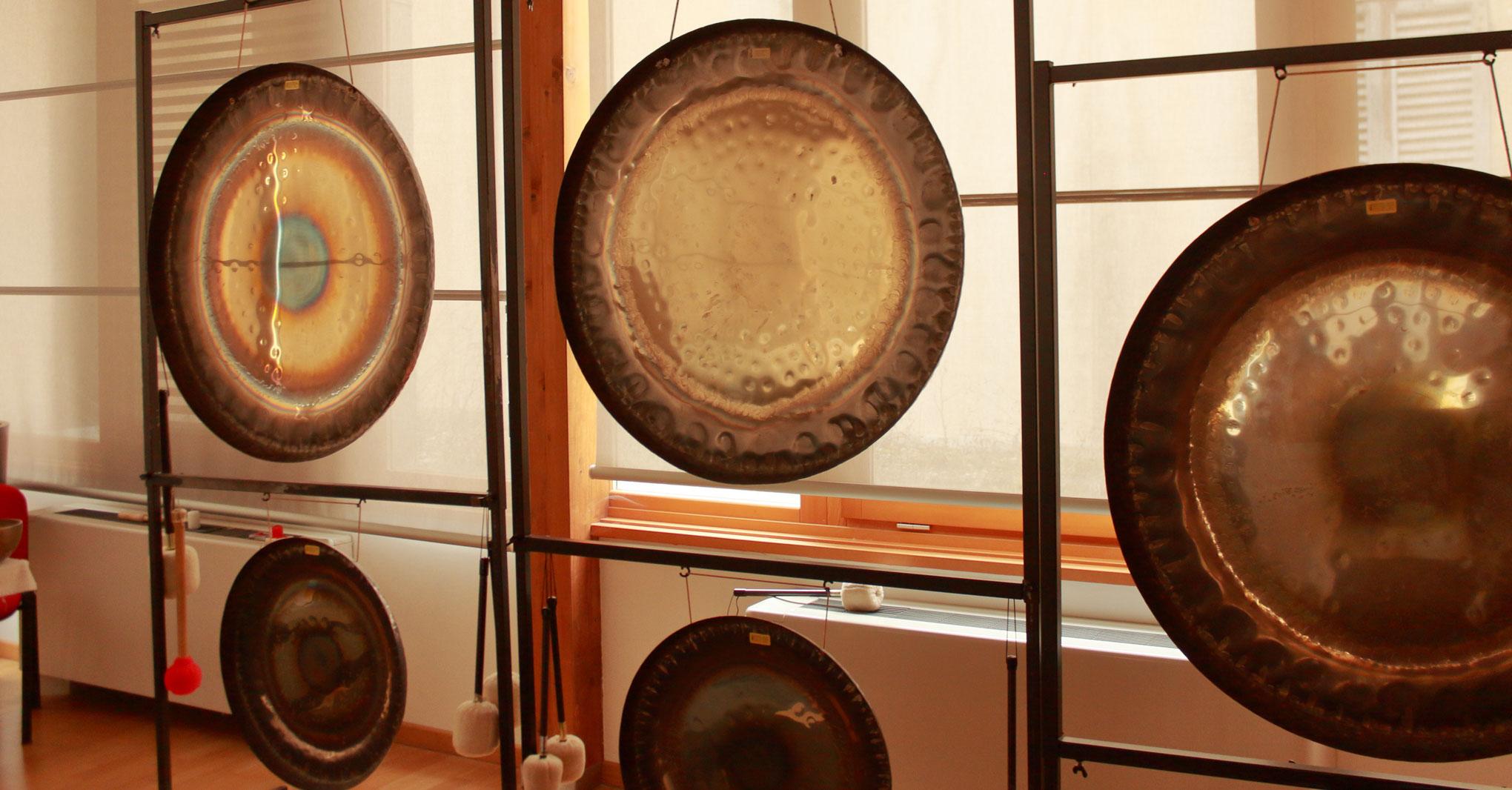
Gongs are fascinating musical instruments with ancient roots, deeply entwined in spiritual, ceremonial, and cultural traditions in various parts of the world. They have a rich history and a wide range of uses, from traditional to contemporary. Here’s an overview:
- Physical Description: A gong is essentially a flat, circular metal disc, traditionally made from bronze or brass. It’s often suspended vertically from a frame and played by striking it with a mallet.
- History and Origins:
- The gong is believed to have originated in Western Asia around 3500 BCE.
- It was later adopted and further developed in Southeast Asia and the Far East, especially in regions that are now modern-day China, Burma (Myanmar), Indonesia, and Malaysia.
- Spiritual and Ritual Use:
- In many Eastern traditions, gongs are used in temples, monasteries, and rituals.
- They’re believed to have the power to decontaminate and purify the surroundings, making them suitable for religious and spiritual ceremonies.
- In some cultures, gongs play a central role in calling communities together for gatherings or alerting them to potential dangers.
- Musical Use:
- Gongs produce a deep, resonating sound with rich overtones. This makes them ideal for various musical and orchestral compositions.
- In traditional gamelan orchestras of Indonesia, for instance, gongs play a critical role.
- Types of Gongs:
- Chau Gong: Recognizable by its lip or rim, it produces deep tones and can be found in Chinese temples and orchestras.
- Wind or Feng Gong: A flat gong with no lip, producing crashing sound waves, often used in orchestras.
- Tam-Tam: A type of flat-faced gong, often found in Western orchestral music.
- Bossed or Nipple Gongs: These gongs have a raised center or “nipple” and are commonly found in gamelan ensembles.
- Bowl Gongs: Shaped like a bowl, these are often smaller and can be held in the hand.
- Therapeutic Use:
- Gongs are used in sound therapy and healing sessions due to their broad range of tones and overtones.
- A “gong bath” is a modern therapeutic relaxation technique where gongs are played in a manner to bring about healing. Attendees typically lie down and allow the sounds to “wash” over them.
- Symbolism: In various cultures, gongs carry significant symbolic weight. They can represent the universe, creation, or the divine due to their shape and the all-encompassing sound they produce.
- Construction and Material: The sound and quality of a gong are largely determined by its material and craftsmanship. Traditionally, gongs are made by heating the metal and hammering it into shape. The precise alloy mix, along with the hammering technique, imparts unique sonic characteristics to each gong.
Gongs continue to hold cultural, spiritual, and musical significance across the globe. They’ve experienced a resurgence in popularity, particularly in the realms of meditation, yoga, and holistic health practices, thanks to their rich, enveloping sounds and therapeutic properties.

Gongs, especially when used in therapeutic settings such as gong baths, are believed to offer a range of physical, emotional, and spiritual benefits. Here are some of the commonly cited benefits:
Deep Relaxation
The diverse tones and vibrations emanating from gongs can lead to profound relaxation, helping individuals release tension and stress.
Stress and Anxiety Reduction
The immersive sonic environment of a gong bath can shift one’s focus from daily stressors, potentially reducing feelings of anxiety and overwhelm.
Meditative States
The resonant sounds of gongs can help individuals enter deeper states of meditation, promoting mindfulness and heightened awareness.
Balancing Energy Centers
Some practitioners believe that the vibrations from gongs can help balance and align the body’s chakras or energy centers.

Emotional Release
The immersive experience can lead to emotional catharsis for some individuals, facilitating the release of pent-up emotions or past traumas.
Enhanced Creativity
By quieting the mind and reducing stress, gong sessions can potentially pave the way for increased creativity and clearer thinking.
Improved Sleep
Many people report improved sleep patterns after attending gong sessions, potentially due to the deep relaxation and stress relief they experienced.
Stimulation of the Parasympathetic Nervous System
This helps promote relaxation and healing. The deep tones of the gong can help shift the brain from the more active beta state to the more relaxed alpha or even theta brainwave states.

Physical Healing
Some proponents of sound therapy believe that the vibrations from gongs can facilitate physical healing, though scientific evidence in this domain remains limited.
Release of Toxins and Free Radicals
Some practitioners suggest that the sound waves stimulate the glandular system to a higher level of functioning and can help shake loose and release toxins and free radicals from the body.
Enhanced Sense of Connection
The communal experience of a gong bath can foster a sense of unity and connection with others.
Spiritual Growth
Some individuals see gong baths as a spiritual experience, enhancing their connection to the universe, higher self, or the divine.
It’s important to approach gong sessions with an open mind, acknowledging that the experience can be highly individual. While many find value in gong baths and sound therapy, it’s essential to combine such practices with traditional medical advice when addressing specific health concerns.




